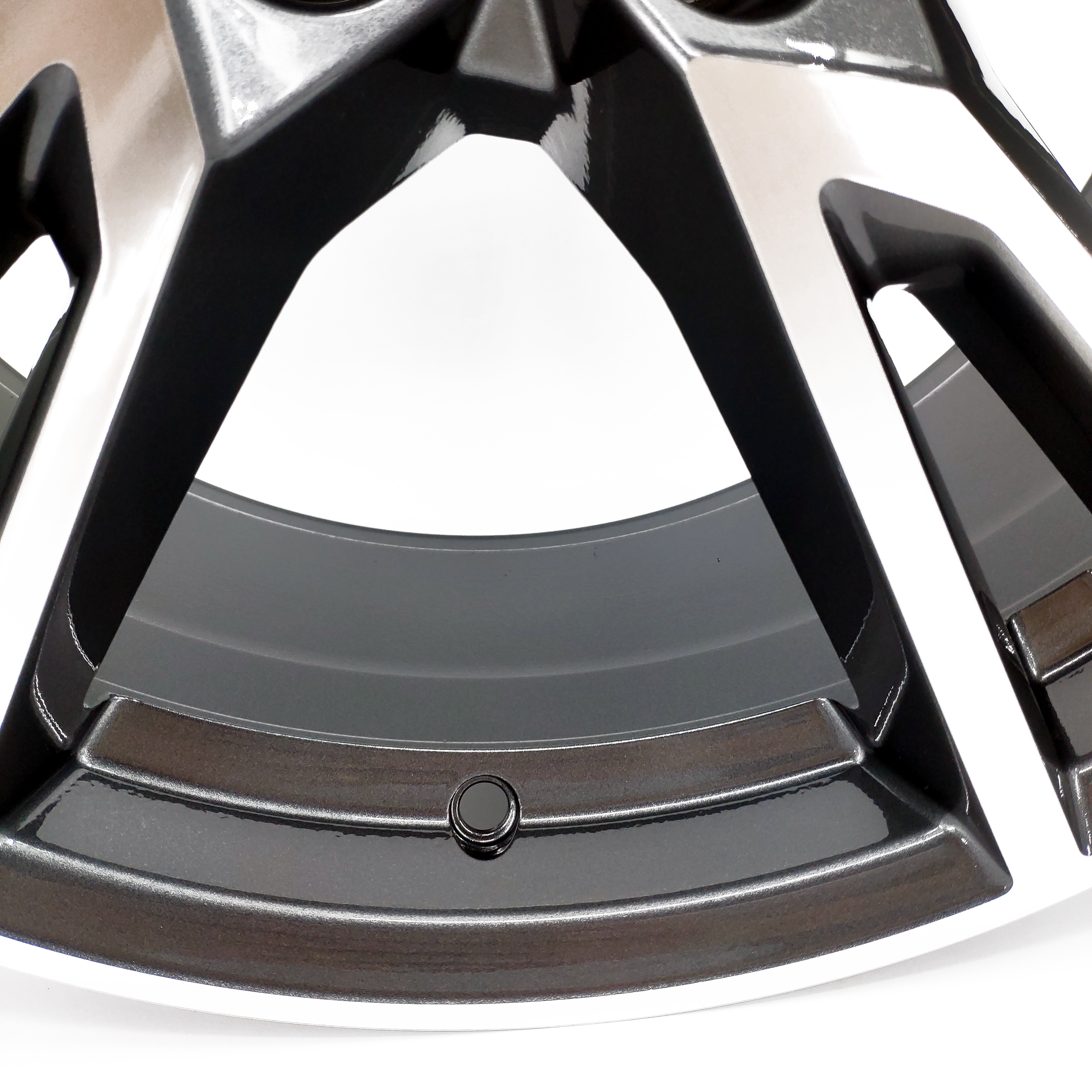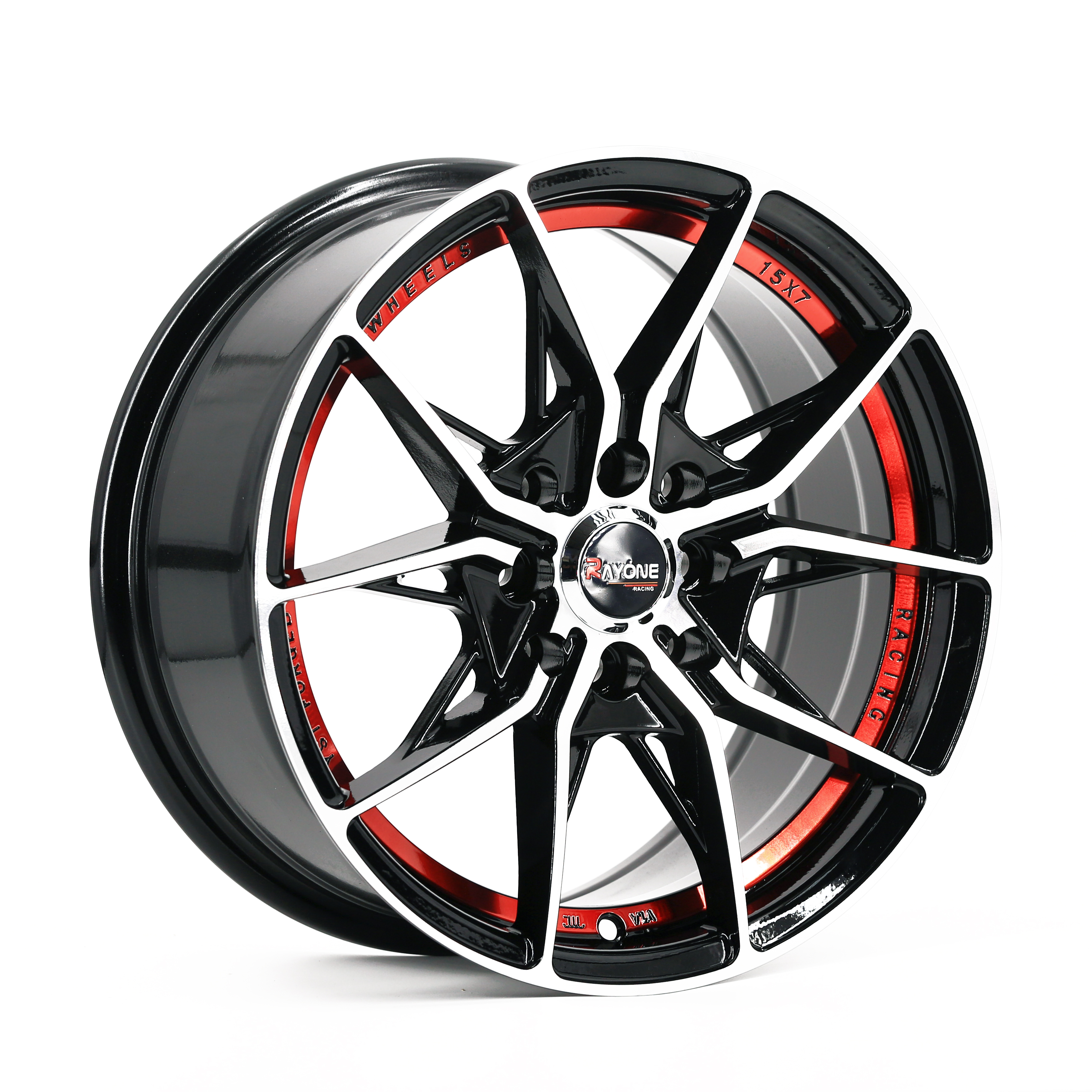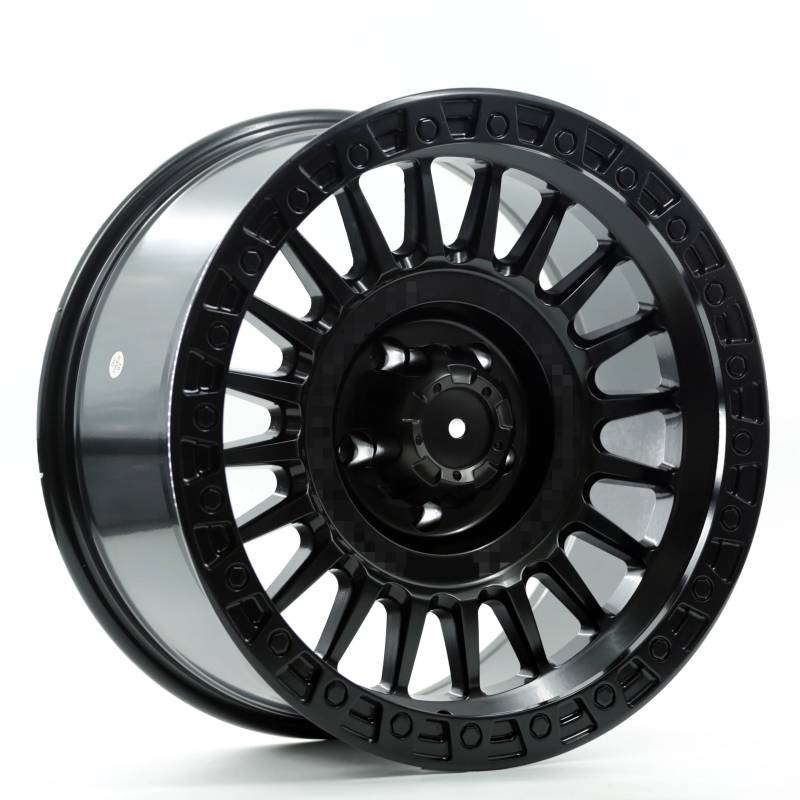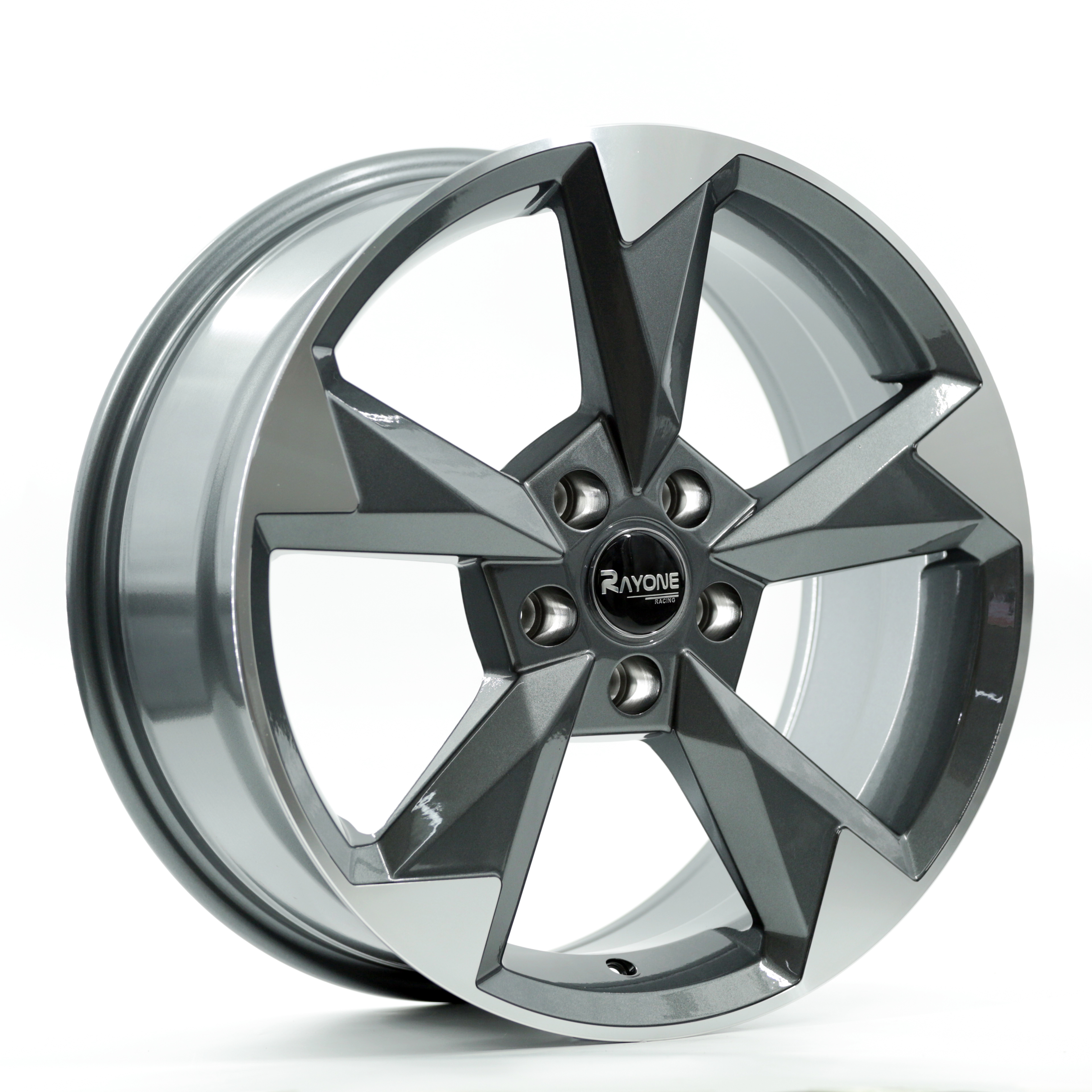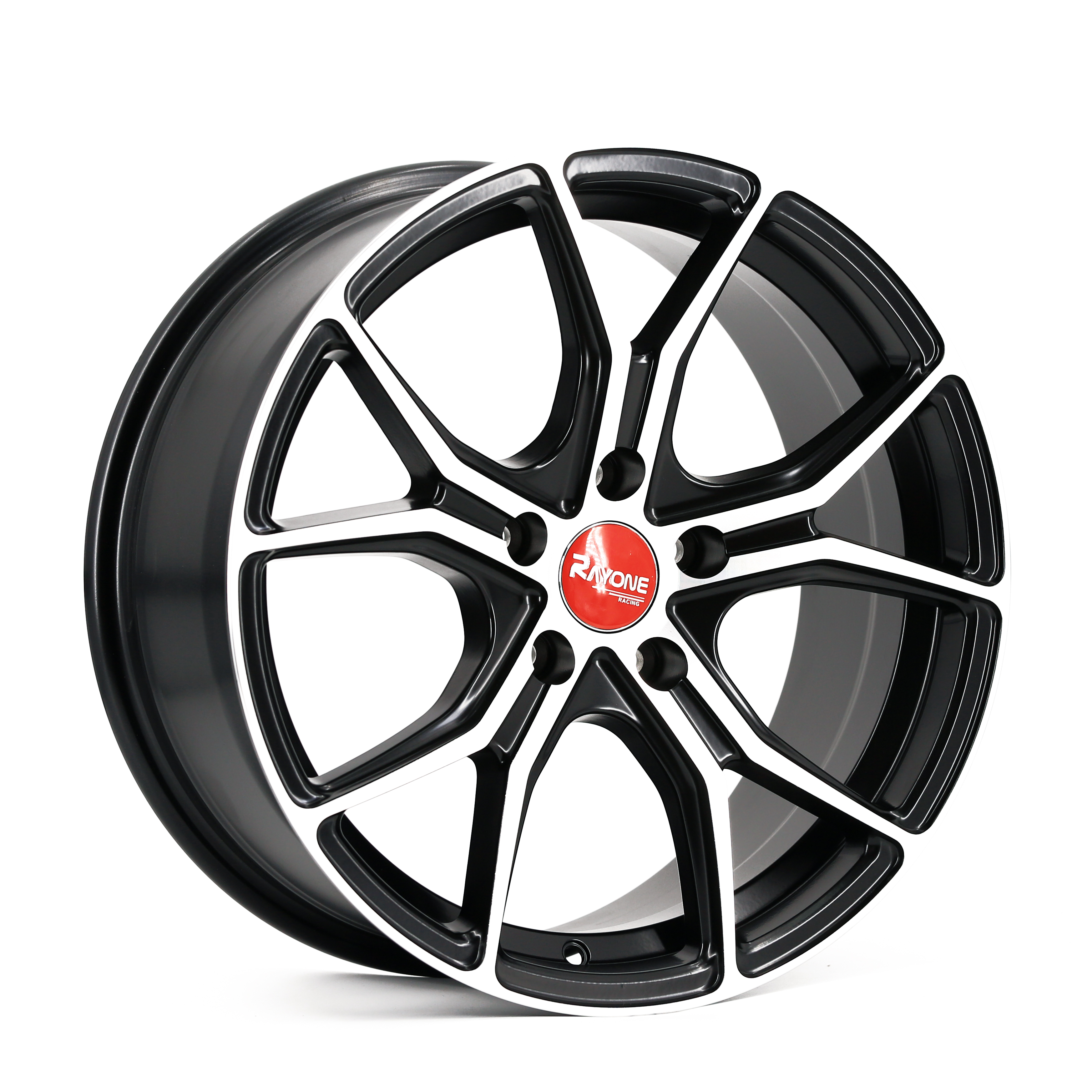Factory Wholesale 19inch Five Spoke Design For Audi Replacement
downloads
Abou The A043
A043 is Audi's replacement wheel, the classic and elegant split five-spoke design makes A043 the focal point of the street, the elegance without ostentation, which is why we chose to drive this set of molds, and he has become the star of the market.
sizes
19''
finish
Black Machine Face,Gun Grey Machine Face
|
Size |
OFFSET |
PCD |
HOLES |
CB |
FINISH |
OEM Service |
|
19x8.0 |
39 |
112 |
5 |
Customized |
Customized |
Support |
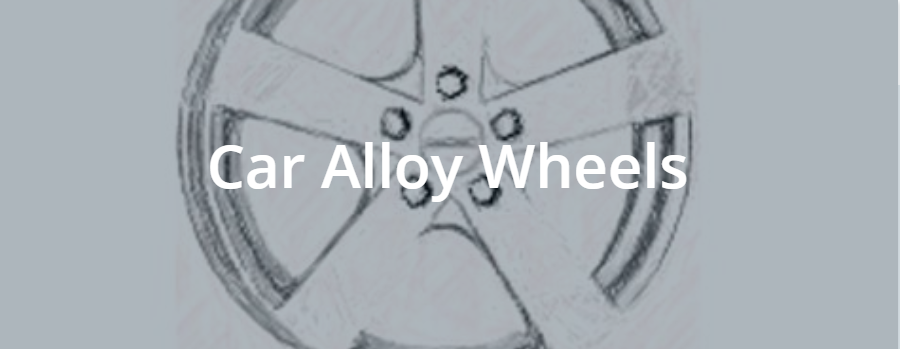
Car light alloy wheels:
In the automotive industry, alloy wheels are wheels that are made from an alloy of aluminum or magnesium. Alloys are mixtures of a metal and other elements. They generally provide greater strength over pure metals, which are usually much softer and more ductile. Alloys of aluminum or magnesium are typically lighter for the same strength, provide better heat conduction, and often produce improved cosmetic appearance over steel wheels. Although steel, the most common material used in wheel production, is an alloy of iron and carbon, the term “alloy wheel” is usually reserved for wheels made from nonferrous alloys.
Lighter wheels can improve handling by reducing unspring mass, allowing suspension to follow the terrain more closely and thus improve grip, however not all alloy wheels are lighter than their steel equivalents. Reduction in overall vehicle mass can also help to reduce fuel consumption.
Better heat conduction and a more open wheel design can help dissipate heat from the brakes, which improves braking performance in more demanding driving conditions and reduces the chance of diminished brake performance or even failure due to overheating.
Alloy wheels are also purchased for cosmetic purposes although the cheaper alloys used are usually not corrosion-resistant. Alloys allow the use of attractive bare-metal finishes, but these need to be sealed with paint or wheel covers. Even if so protected the wheels in use will eventually start to corrode after 3 to 5 years but refurbishment is now widely available at a cost. The manufacturing processes also allow intricate, bold designs. In contrast, steel wheels are usually pressed from sheet metal, and then welded together (often leaving unsightly bumps) and must be painted to avoid corrosion and/or hidden with wheel covers/hub caps.
Alloy wheels are more expensive to produce than standard steel wheels, and thus are often not included as standard equipment, instead being marketed as optional add-ons or as part of a more expensive trim package. However, alloy wheels have become considerably more common since 2000, now being offered on economy and subcompact cars, compared to a decade earlier where alloy wheels were often not factory options on inexpensive vehicles. Alloy wheels have long been included as standard equipment on higher-priced luxury or sports cars, with larger-sized or “exclusive” alloy wheels being options. The high cost of alloy wheels makes them attractive to thieves; to counter this, automakers and dealers often use locking lug nuts which require a special key to remove.
Most alloy wheels are manufactured using casting, but some are forged. Forged wheels are usually lighter, stronger, but much more expensive than cast wheels. There are two types of forged wheels: one piece and modular. Modular forged wheels may feature two- or three-piece design. Typical multi-piece wheels consist of the inner rim base, outer rim lip and wheel center piece with openings for lug nuts. All parts of a modular wheel are held with bolts. Rayone KS001 is one of the most famous three-piece modular forged wheels for instance.
A sizable selection of alloy wheels is available to automobile owners who want lighter, more visually appealing, rarer, and/or larger wheels on their cars. Although replacing standard steel wheel and tire combinations with lighter alloy wheels and potentially lower profile tyres can result in increased performance and handling, this doesn’t necessarily hold when increasingly large wheels are employed. Research by Car and Driver conducted using a selection of differently sized alloy wheels from 15” to 21” in (38,1cm to ca. 53,34 cm) all outfitted with the same make and model of tires showed that both acceleration and fuel economy suffered with larger wheels. They also noted that ride comfort and noise were negatively affected by the larger wheels.
Production Methods:
Forging can be done by a one or multi-step process forging from various magnesium alloys, most commonly AZ80, ZK60 (MA14 in Russia). Wheels produced by this method are usually of higher toughness and ductility than aluminium wheels, although the costs are much higher.
High pressure die casting (HPDC). This process uses a die arranged in a large machine that has high closing force to clamp the die closed. The molten magnesium is poured into a filler tube called a shot sleeve. A piston pushes the metal into the die with high speed and pressure, the magnesium solidifies and the die is opened and the wheel is released. Wheels produced by this method can offer reductions in price and improvements in corrosion resistance but they are less ductile and of lower strength due to the nature of HPDC.
Low pressure Die casting (LPDC). This process usually employs a steel die, it is arranged above the crucible filled with molten magnesium. Most commonly the crucible is sealed against the die and pressurized air/cover gas mix is used to force the molten metal up a straw-like filler tube into the die. When processed using best practice methods LPDC wheels can offer improvements in ductility over HPDC magnesium wheels and any cast aluminium wheels, they remain less ductile than forged magnesium.
Gravity casting. Gravity-cast magnesium wheels have been in production since the early 1920s and provide good ductility, and relative properties above what can be made with aluminium casting. Tooling costs for gravity-cast wheels are among the cheapest of any process. This has allowed small batch production, flexibility in design and short development time.



